Choosing between polyester and cotton is more than a fabric debate—it impacts comfort, performance, cost, and sustainability across your entire product line. What truly sets polyester and cotton apart? In essence, polyester’s synthetic PET structure delivers superior moisture-wicking, UV resistance, and durability, while cotton’s natural cellulose fibers offer breathability, softness, and biodegradability. Both have unique strengths and trade-offs, so matching their properties to your end-use requirements—be it activewear, workwear, home textiles, or eco-branded apparel—is crucial. Imagine a hotel bedding set that must withstand daily laundering, or a performance tee that keeps athletes dry; the ideal fiber choice can make or break both functionality and customer satisfaction.
Let’s dive into the head-to-head comparison, backed by data, critical insights, and real-world use cases, so you can pick the right fabric foundation for your next collection.
What Are the Fundamental Differences Between Polyester and Cotton Fibers?
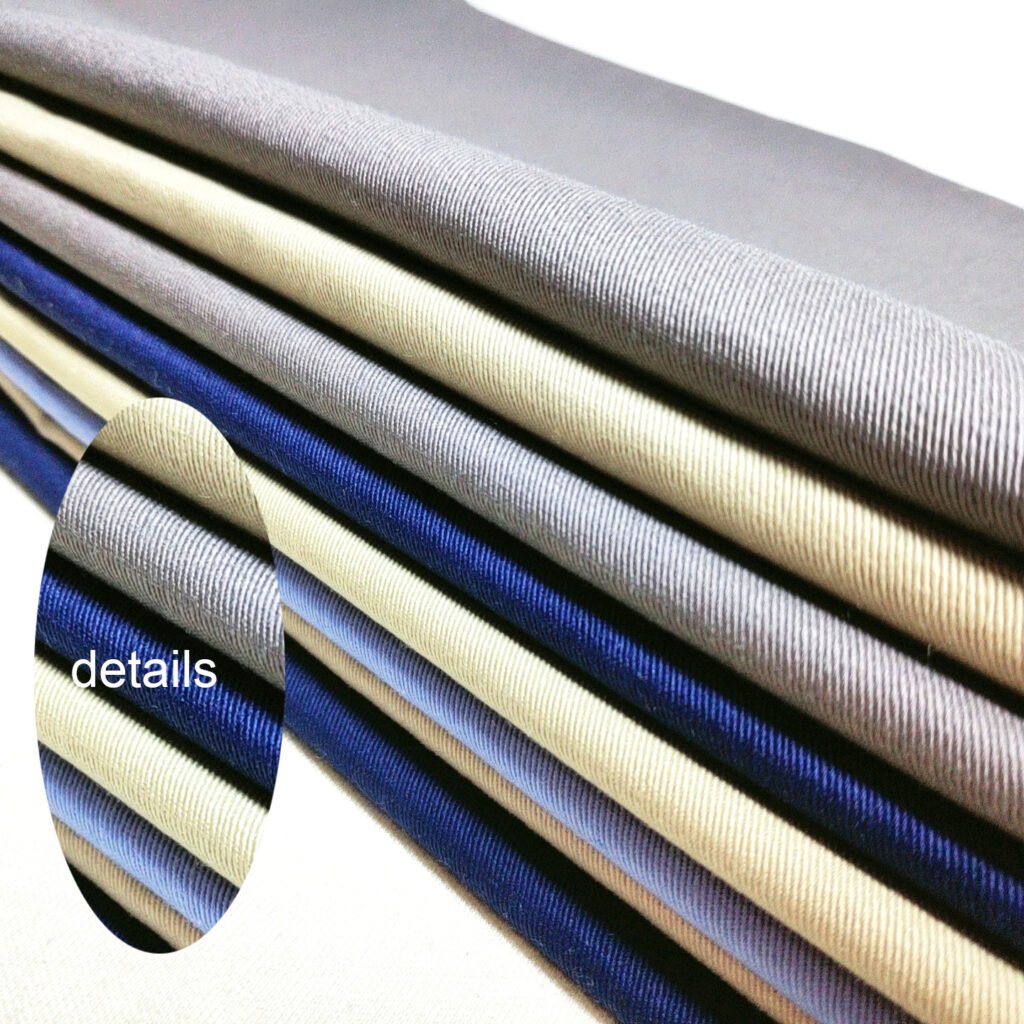
Polyester (polyethylene terephthalate) is a man-made polymer engineered for high tenacity and low moisture uptake, whereas cotton is a natural cellulose fiber prized for its moisture regain and soft hand. Polyester’s ester linkages create hydrophobic fibers with moisture regain of \~0.4% and tenacity of 500–800 MPa, offering quick-dry performance and UV stability. Cotton’s high moisture regain (7–8%), tenacity of 200–400 MPa, and irregular ribbon-like morphology deliver breathable comfort but slower drying. These inherent fiber traits guide fabric selection based on performance, comfort, and care priorities.
Fiber Chemistry & Morphology
Moisture Regain & Drying Property Polyester Cotton Moisture Regain (%) 0.4 7–8 Dry Time (min) 10–15 30–45
Tensile Strength & Elongation Property Polyester Cotton Tenacity (MPa) 500–800 200–400 Break Elongation (%) 15–30 10–20
Surface & Hand Feel
- Polyester: Smooth, variable cross-sections (tri-lobular, hollow) for different softness and luster.
- Cotton: Ribbon-like, matte finish; softens with wash.
Thermal Properties
- Polyester: Glass transition \~70 °C—resists heat; low conductivity.
- Cotton: Decomposes at \~260 °C; feels cooler initially.
While polyester excels in performance metrics, cotton’s natural comfort and biodegradability remain unmatched—especially in markets demanding “clean” and “natural” claims.
How Do Polyester and Cotton Compare in Moisture Management and Breathability?
Polyester’s hydrophobic fibers, enhanced with wicking finishes, move moisture at 0.8 cm/s and dry in 8–12 minutes (MVTR 8,000–10,000 g/m²·24 h), keeping skin surface dry. Cotton absorbs 7–8 % of its weight in water yet holds moisture for 30–45 minutes (MVTR 5,000–8,000 g/m²·24 h), offering natural cooling but feeling damp if heavily perspired.
Moisture & Airflow Characteristics
Moisture Regain & Drying Speed Fabric Moisture Regain (%) Dry Time (min) 100 % Polyester 0.4 8–12 Treated Polyester 0.4 6–10 100 % Cotton 7–8 30–45
Wicking Rate & MVTR
Wicking Rate (capillary flow):
- Polyester (treated): 0.8 cm/s
- Cotton: 0.3 cm/s
- MVTR (Moisture Vapor Transmission Rate): Fabric MVTR (g/m²·24 h) Polyester 8,000–10,000 Cotton 5,000–8,000
Breathability Factors Beyond Fiber
- Fabric Construction: Open knits and mesh increase airflow for both fibers.
- Weight & Thickness: Lighter GSM fabrics naturally ventilate better.
- Surface Treatments: Hydrophilic finishes on polyester can degrade after 20–30 washes—care instructions extend performance.
Although polyester outperforms cotton in rapid moisture transport, cotton’s natural cooling effect and biodegradability appeal to eco-conscious consumers. For best results, consider blended or panel designs (e.g., cotton body with polyester mesh zones) to optimize comfort and performance in high-sweat applications.
Which Fabric Offers Superior Durability and Abrasion Resistance?
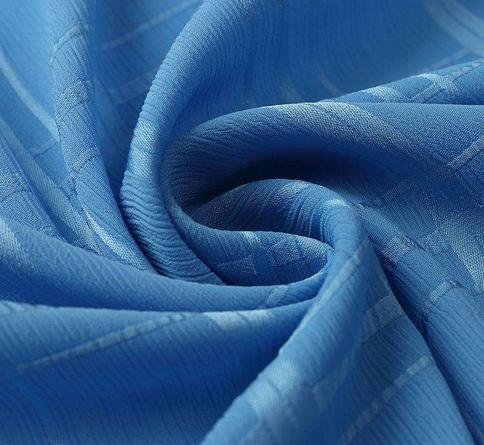
Polyester significantly outperforms cotton in both tensile strength and abrasion resistance. Polyester fibers exhibit tenacity of 500–800 MPa and withstand 30,000–45,000 Martindale cycles, whereas cotton’s tenacity is 200–400 MPa with 8,000–12,000 cycles. This makes polyester the go-to choice for high-wear applications—like workwear, upholstery, and outdoor gear—where longevity and color retention are paramount.
Wear Testing & Lifecycle Performance
Tensile Strength & Elongation Property Polyester Cotton Tenacity (MPa) 500–800 200–400 Break Elongation (%) 15–30 10–20
Abrasion Resistance (Martindale Method) Fabric Martindale Cycles to First Wear Polyester 30,000–45,000 Cotton 8,000–12,000
Colorfastness & UV Stability Condition Polyester Strength Retention Cotton Strength Retention 500 h UV (ASTM D4329) \~80 % \~60 % 20 Home Laundering Cycles \~85 % \~70 %
Pilling & Surface Wear
- Polyester: Low pilling tendency, maintains smooth appearance over time.
- Cotton: Moderate to high pilling in high-abrasion zones, leading to a worn look.
While polyester clearly dominates in raw durability metrics, finish treatments (e.g., mercerization for cotton) can boost cotton’s abrasion resistance and luster—but rarely to polyester’s level. For end‐uses demanding both ruggedness and a natural fiber label, consider cotton blends with polyester to achieve a compromise between durability and comfort.
How Do Polyester and Cotton Differ in Comfort, Hand Feel, and Thermal Properties?
Cotton’s ribbon-like fibers create a soft, breathable hand with high moisture regain (7–8%) and low thermal conductivity (0.04 W/m·K), feeling cool against skin. Polyester’s smooth filaments (tri-lobular or hollow) offer variable hand—crisp or silky—low moisture regain (0.4%), higher thermal conductivity (0.20 W/m·K), and faster heat transfer, resulting in a slightly warmer “next-to-skin” feel. Finishes like silicone softeners or enzyme washes can narrow the comfort gap, so final treatment often dictates real-world comfort.
Surface Feel, Drape & Thermal Comfort
Surface Friction & Smoothness
- Coefficient of Friction (CoF): Fabric CoF Range Perceived Feel Cotton 0.40–0.50 Soft, slightly “grippy” Polyester 0.30–0.35 Slick, low-drag
Thermal Conductivity & Heat Transfer Property Cotton Polyester Thermal Conductivity 0.04 W/m·K 0.20 W/m·K Initial Sensation Feels cooler Neutral to warm
Drape & Hand Softness After Finishes Treatment Drape Coeff. Tensile Strength Change Softness Gain Enzyme Wash +15% –2% +15% Silicone Softener +20% –5% +20%
Moisture Interaction & Comfort
- Cotton absorbs sweat, maintaining a cooler microclimate but can feel damp.
- Polyester wicks away moisture rapidly, staying dry but feeling less “natural.”
While raw fiber traits set a baseline, fabric construction (weave/knit), finish applications, and denier ultimately determine wearer comfort. Always evaluate finished fabric samples under realistic wear conditions—no lab metric fully captures how a textile “feels” on the skin.
What Are the Care, Maintenance, and Lifespan Considerations for Each Fabric?
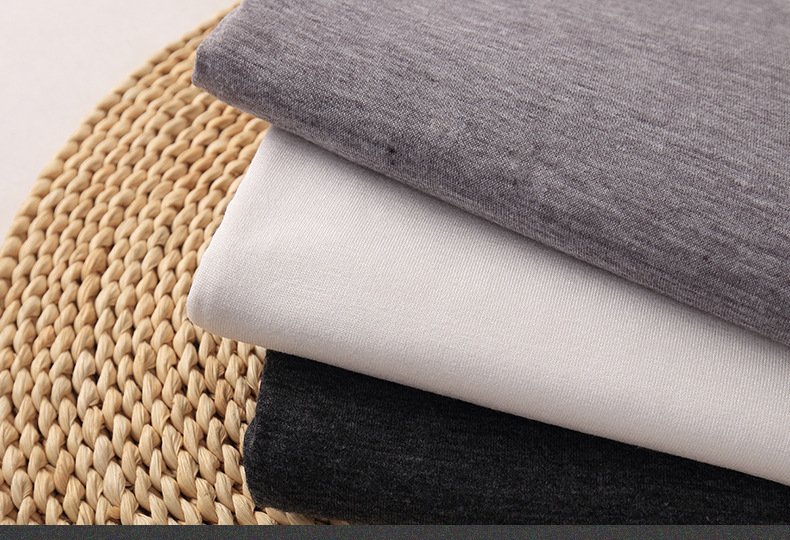
Polyester and cotton demand different care routines that directly influence their longevity. Polyester tolerates machine washing up to 60 °C, tumble drying on low heat, and resists wrinkles—rarely needing ironing—and retains ≥90 % of its strength after 50 wash cycles, giving it a 5–7 year service life in high‐use settings. Cotton typically requires gentler washes (≤40 °C), may shrink 3–5 % if not sanforized, and often needs ironing, retaining only 70–80 % strength after 20–30 cycles—translating to a 2–4 year lifespan under similar conditions. Proper care extends both fabrics’ useful life and optimizes total cost of ownership.
Care Protocols & Longevity Metrics
Washing & Shrinkage Fabric Max Wash Temp Shrinkage (%) Sanforized Shrinkage (%) Polyester 60 °C <1 N/A Cotton 40 °C 3–5 <1
Drying & Wrinkle Management
- Polyester: Tumble-dry low; virtually wrinkle-free.
- Cotton: Tumble-dry medium; iron at medium-high heat; wrinkle-release treatments available.
Pilling & Surface Wear Fabric Pilling Tendency Martindale (cycles) Care Tip Polyester Low 30,000–45,000 Wash inside-out, low spin Cotton Moderate 8,000–12,000 Use gentle cycle, avoid overloading
Lifespan & Replacement Cycle Fabric Strength Retention after X Washes Typical Lifespan (years) Polyester ≥90% after 50 washes 5–7 Cotton \~75% after 30 washes 2–4
Cost of Ownership
- Polyester’s extended lifespan lowers annualized replacement costs despite similar upfront pricing.
- Cotton’s premium feel may justify shorter replacement intervals in luxury segments.
Over- or under-caring both fabrics can shorten their useful life—educating end-users with clear care labels and blending fabrics only when care regimens align is essential to maximize performance and customer satisfaction.
Are There Sustainability and Environmental Impacts Unique to Polyester or Cotton?
Yes—cotton cultivation consumes about 10,000 L of water per kg and relies heavily on pesticides, whereas polyester production uses minimal water but depends on nonrenewable petrochemicals and generates \~3.4 kg CO₂/kg. Recycled polyester (rPET) cuts carbon emissions by 30–50% and water use by \~20%, while organic cotton reduces water use by 50–65% and eliminates synthetic agrochemicals but costs \~20% more. Each fiber’s environmental footprint hinges on raw‐material sourcing, processing, and end‐of‐life pathways.
Environmental Trade-Offs & Mitigation Strategies
Water Footprint & Agrochemical Use Metric Cotton Organic Cotton Polyester (Virgin) rPET Polyester Water Use (L/kg) 10,000 3,500 (–65%) 50 40 (–20%) Pesticide Use High None N/A N/A
Carbon Emissions & Energy Metric Cotton Polyester rPET Polyester CO₂ Emissions (kg/kg) 2.0 3.4 1.7 (–50%) Energy Demand (MJ/kg) 55 125 70 (–44%)
End-of-Life & Recycling
- Cotton: Biodegradable and compostable in industrial facilities; may release methane if landfilled.
- Polyester: Mechanically and chemically recyclable; closed-loop rPET programs enable cradle-to-cradle but require collection infrastructure.
Chemical Footprint & Microplastics
- Cotton: Risk of pesticide runoff impacting ecosystems.
- Polyester: Potential microplastic shedding (\~100–300 mg per wash); advanced finishes and filters can mitigate release.
Critical Lens:
- No fiber is impact-free. Brands must weigh resource intensity, recyclability, and consumer care habits. Combining recycled synthetics with organic or regenerative cotton—and promoting proper end-of-life collection—offers a path toward balanced sustainability without sacrificing performance.
Which Fabric Is More Cost-Effective for Various Applications and Volume Needs?
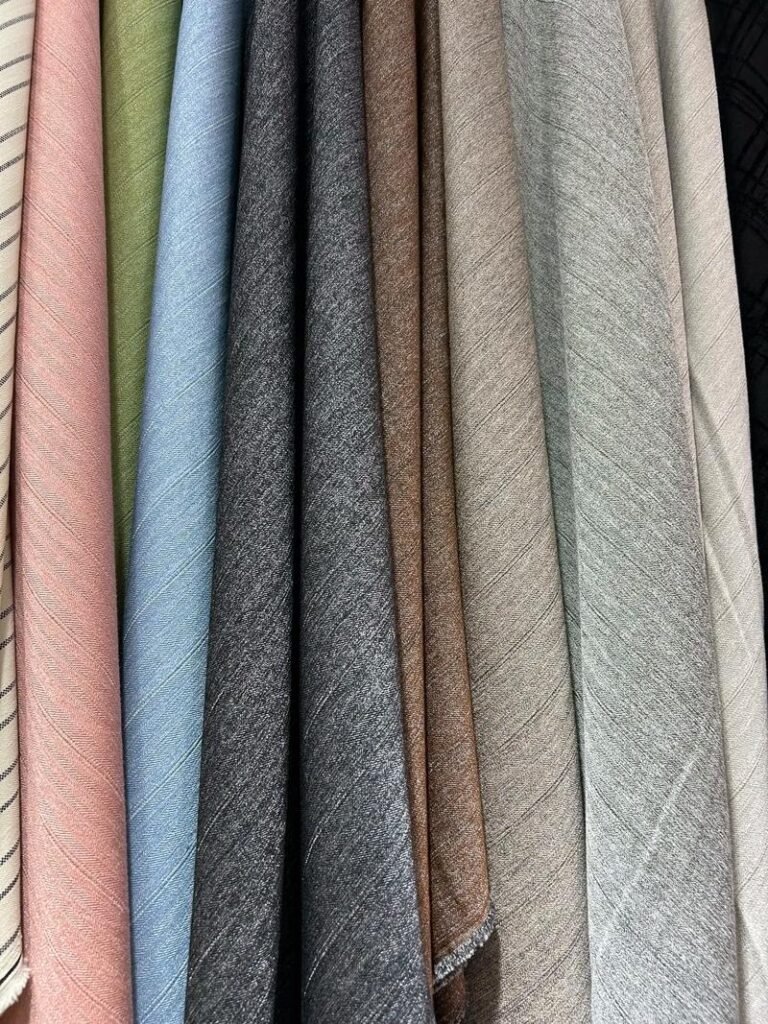
Polyester typically costs \$2–\$4 per meter with MOQs around 1,000 m and endures 5–7 years in heavy use, making its annualized cost \$0.40–\$0.80/m·yr. Cotton runs \$3–\$6/m with 500 m MOQs and a 2–4 year lifespan (annualized \$0.75–\$1.50/m·yr). For high-volume, high-abrasion applications—like uniforms or hotel linens—polyester offers the best total cost of ownership; cotton wins when natural comfort and premium positioning justify higher unit costs.
Cost Structures & ROI Analysis
Unit Cost, MOQ & Lifespan
| Fiber | Cost (USD/m) | MOQ (m) | Lifespan (years) | Annualized Cost (USD/m·yr) |
|---|---|---|---|---|
| Polyester | 2–4 | 1,000 | 5–7 | 0.40–0.80 |
| Cotton | 3–6 | 500 | 2–4 | 0.75–1.50 |
- Polyester: Low unit cost, high durability, favors bulk orders.
- Cotton: Higher unit cost, shorter service life, suitable for premium or small-batch lines.
Total Cost of Ownership by Application
| Application | Polyester TCO | Cotton TCO | Notes |
|---|---|---|---|
| Hotel Bedding & Linens | \$0.60/m·yr | \$1.20/m·yr | Polyester reduces frequent replacements |
| Uniforms & Workwear | \$0.50/m·yr | \$0.90/m·yr | Polyester stands up to industrial laundering |
| Casual Apparel | \$0.75/m·yr | \$1.00/m·yr | Cotton commands higher retail pricing but may increase returns due to shrinkage |
| Activewear & Sports | \$0.55/m·yr | \$1.30/m·yr | Polyester’s quick-dry and stretch justify the choice |
Negotiation & Sourcing Strategies
- Volume Discounts: Committing to multi-season orders can cut polyester costs by 5–10%.
- Blended MOQs: Combining several colors or qualities in one shipment to meet MOQ without overstocking.
- Flexible Lead Times: Opt for staggered deliveries to align production with sales forecasts.
While polyester often delivers superior cost-efficiency in volume and durability, cotton’s premium positioning and “natural” appeal can command higher margins—so factor in brand strategy and perceived value alongside raw cost metrics.
How Do Polyester-Cotton Blends Leverage the Strengths of Both Materials?
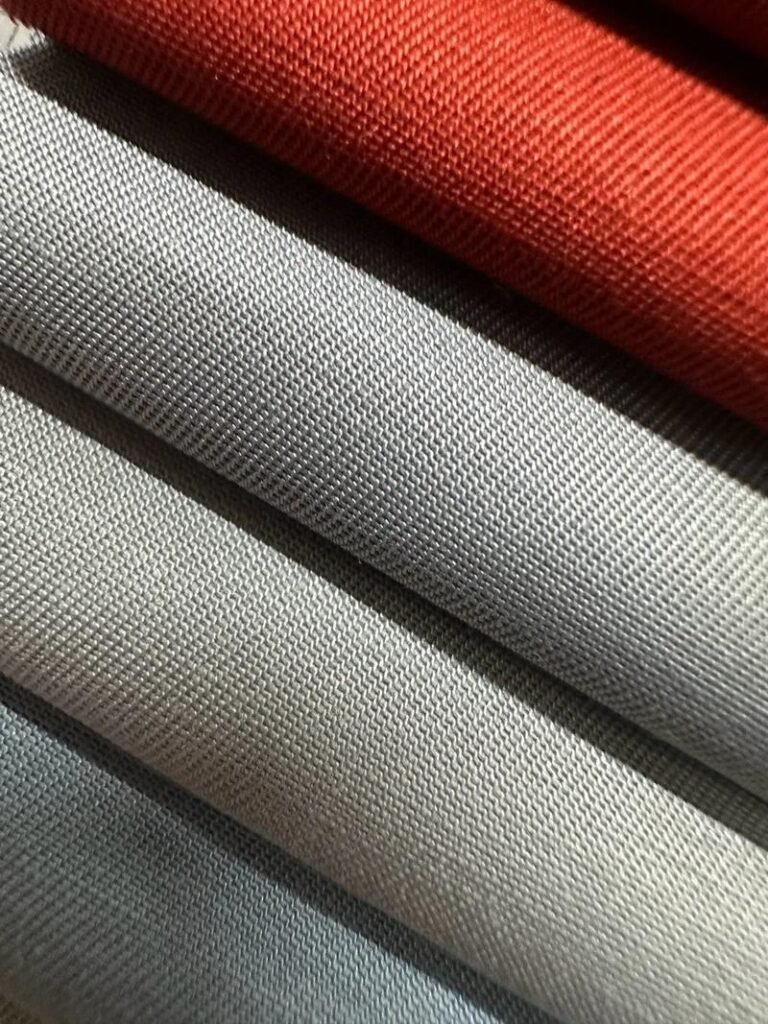
Polyester-cotton blends combine polyester’s strength, wrinkle resistance, and quick-dry performance with cotton’s softness, breathability, and moisture regain. A typical 65/35 PET/CO blend delivers 3 % moisture regain, dries in 15–25 minutes, resists 20,000–30,000 Martindale abrasion cycles, and shrinks <2 %. This balanced profile makes blends ideal for casual wear, uniforms, and workwear.
Blend Performance Profiles
Moisture Management & Care
| Blend Ratio | Moisture Regain (%) | Dry Time (min) | Shrinkage (%) |
|---|---|---|---|
| 50 % P / 50 % C | 3.5 | 20–30 | <2 |
| 65 % P / 35 % C | 3.0 | 15–25 | <2 |
- Moisture Regain: Improved over 100 % polyester (0.4 %) yet dries much faster than 100 % cotton.
- Shrinkage Control: Sanforized blends maintain dimensional stability under laundering.
Durability & Wear Resistance
| Property | Polyester-Cotton Blend | 100 % Polyester | 100 % Cotton |
|---|---|---|---|
| Martindale Abrasion | 20,000–30,000 cycles | 30,000–45,000 | 8,000–12,000 |
| Tensile Strength (MPa) | 400–600 | 500–800 | 200–400 |
| Pilling Resistance | Moderate | High | Low |
- Abrasion: Blends deliver substantial durability for everyday and industrial use.
- Strength: Tensile performance sits between cotton and polyester, balancing resilience with hand feel.
Cost & Application Fit
| Blend Ratio | Cost (USD/m) | Ideal Uses |
|---|---|---|
| 50 % P / 50 % C | 2.5–4.0 | Casual shirts, light uniforms |
| 65 % P / 35 % C | 3.0–5.0 | Workwear, industrial garments |
- Affordability: Blends often cost less than pure cotton and offer easier care.
- Versatility: Suitable for B2B applications requiring a balance of comfort, durability, and cost efficiency.
While polyester-cotton blends offer an excellent middle ground, they complicate recycling processes and may not fulfill strict natural-fiber or synthetic-fiber brand claims. For full circularity, consider mono-material constructions or design take-back programs to reclaim blend textiles at end of life.
Ready to source the perfect fabric for your next line?
Polyester and cotton each bring unique advantages: polyester for durability, quick-drying, and cost efficiency; cotton for natural comfort and eco-appeal. By aligning fiber properties, care requirements, and sustainability goals with your product needs, you can choose—or blend—their strengths for optimal performance and brand alignment.
Partner with Szoneier Fabrics for expert R\&D, free design consultations, low-MOQ sampling, and rapid, quality-guaranteed production.

